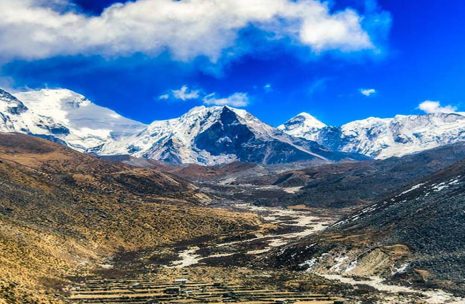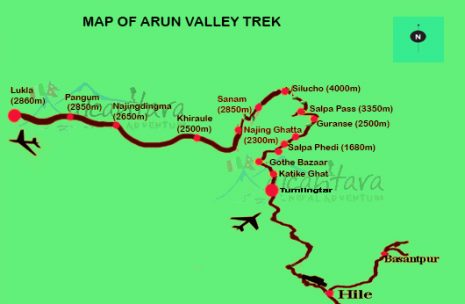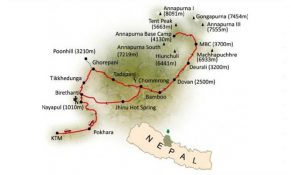The Arun Valley Trek is a challenging and rewarding trek located in the eastern Himalayas of Nepal. The trek is renowned for its breathtaking mountain vistas, secluded villages, and a high mountain pass that offers a thrilling adventure. It is recommended for experienced trekkers who are seeking a less-crowded and more adventurous trail in Nepal.
The trek begins in the town of Tumlingtar, which is located about 270 kilometers east of Kathmandu. From Tumlingtar, the trail climbs up to the Arun River Valley, which is home to a number of stunning villages and monasteries. The trail also passes through rhododendron forests, waterfalls, and glaciers.
The highest point on the trek is the Arun Pass (5,800 meters), which is situated at the head of the Arun Valley. The Arun Pass offers panoramic views of the surrounding mountains, including Makalu (8,463 meters), the fifth highest mountain in the world.
From the Arun Pass, the trail descends to the Barun Valley, which is a less-visited region of Nepal. The valley is home to a number of traditional villages, as well as the Barun Glacier, which is one of the largest glaciers in Nepal.
The Arun Valley Trek is a challenging but rewarding trek that offers stunning scenery and a unique cultural experience. It is a great option for experienced trekkers who are looking for an off-the-beaten-path adventure in Nepal.
Here are some tips for planning your Arun Valley Trek:
The best time to trek in the Arun Valley is during the spring (March-May) or autumn (September-November).
Be sure to acclimatize properly to the altitude, especially if you are trekking to the Arun Pass.
Pack warm clothes, as the temperatures can drop significantly at night.
Be sure to bring plenty of water and snacks, as there are limited shops and restaurants along the trail.
Hire a guide and porters if you are not experienced in trekking in Nepal.
Be respectful of the local cultures and customs.







